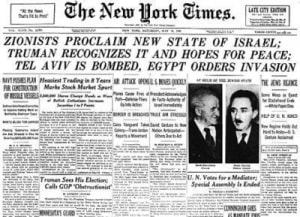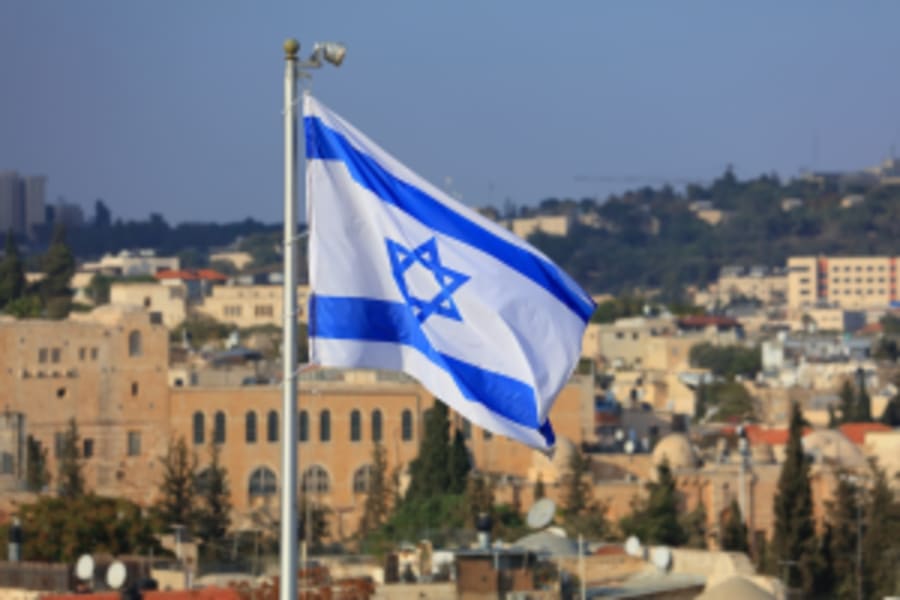Israel discusses utopian plan to transform Gaza into ‘Singapore on the Mediterranean’ after the war
Netanyahu reportedly not willing to discuss plans openly for fear of right-wing partners

Much has been written about possible Israeli plans for the Gaza Strip after the end of the war. Prime Minister Benjamin Netanyahu has been intensely criticized for his lack of willingness so far to discuss his vision for the enclave publicly.
On Friday, the New York Times reported that the Prime Minister’s Office (PMO) has been examining an ambitious plan that would see Israel manage the Gaza Strip together with other Arab countries for several years before control would be passed to the Palestinians.
The plan was reportedly drawn up by a group of businessmen in November, most of them Israeli and some of them close to Netanyahu, and was first proposed to the PMO in December.
According to the NYT, in return for normalization with Saudi Arabia, Israel would agree to share control over Gaza with the Saudi Kingdom, the United Arab Emirates, Egypt and the United States for several years.
The Israeli news outlet Ynet first reported the plan in March, calling it "Netanyahu's plan to turn Gaza into a kind of Singapore."
Singapore is a commonly used reference for economic success in Israeli politics, as the island nation became an economic miracle while dealing with similarly adverse circumstances as the Jewish state.
On Friday Ynet for the first time shared a presentation of the plan titled, “From crisis to prosperity – a plan for the transformation of the Gaza Strip from Iranian aggression to the moderate axis.”
“The goal – Gaza prospers as part of an Abrahamic regional architecture,” the plan states. “The risk – Gaza is an Iranian outpost that disrupts the moderate regional architecture, sabotages the emerging supply chains from India through the Gaza Strip to Europe, and thwarts any future Palestinian political hope.”
“The opportunity – Gaza prospered in the past as a crossroads between two ancient trade routes – the sea route (Egypt-Gaza-Babylon), and the incense route (India-Yemen-Saudi Arabia-Europe). It can return and thrive in the center of moderate regional architecture,” the presentation continues.

The plan, at first, imagines Israel creating Hamas-free zones in the Gaza Strip that will eventually cover its whole area while Arab countries, including Saudi Arabia, the United Arab Emirates, Egypt, Bahrain, Jordan and Morocco, would facilitate the provision of humanitarian aid in the safe areas. This stage of the program would last 12 months.
During the second stage, envisioned to last five to 10 years, Israel would continue having security control while the Arab countries create a multilateral body that will oversee, guide and finance a “Gaza Reconstruction Authority.”
This authority would be run by Palestinians, take control of the safe areas, implement a large-scale Marshall Plan and run de-radicalization initiatives.
The power over the Strip would then gradually be transferred to a local government or the Palestinian Authority (PA) through a vote, according to the NYT.
The plan states this would happen “on the condition that the Palestinian Authority proves its ability to carry out de-radicalization and demilitarization, and subject to the agreement of all parties.”
In the final stage of the plan, the Gaza Strip would be managed by Palestinians and join the Abraham Accords.
According to its authors, the plan would bring Israel “long-term security in the south, integration in the region, economic opportunities in the south and normalization with Saudi Arabia.”
They also claimed that all involved parties stood only to gain from the plan, which could be connected to existing plans for mega projects in the region, like Saudi Arabia’s futuristic “Neom” city.
“Gaza can become a significant industrial production center for the shores of the Mediterranean, with excellent access to markets (Europe, the Gulf, Asia), energy and raw materials (from the Gulf), while leveraging Israeli technology,” they wrote.
In addition, they proposed a “Sderot-Gaza-El-Arish free trade zone” and a railway and infrastructure junction connecting Neom in Saudi Arabia, Tel Aviv and Haifa, and Cairo and Alexandria in Egypt.

Despite the potential of the ambitious plan and support from some officials in the Prime Minister's Office, the New York Times reported that Netanyahu has refrained from publicly discussing it due to concerns about losing the support of the right wing of his government, which is likely to oppose the plan.
Two Israeli officials told the NYT that the plan is still being examined at the highest levels, noting, “it cannot be implemented until Hamas is defeated and the hostages remaining in Gaza are released.”
On the other hand, most of the Arab partners so far also rejected the idea, while some “cautiously welcomed the proposal” as it indicated more flexibility from Netanyahu than his public statements.
Arab officials have criticized the plan as unworkable because it does not outline a clear path to establishing a Palestinian state, a condition set by Saudi Arabia and the Emirates for their participation.
We recommend to read:

The All Israel News Staff is a team of journalists in Israel.
















